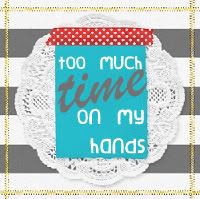If you are planning to improve your workout routine in 2012, here are great tips from Real Simple publication. Very useful material, enjoy!
1. You Need to Switch Up Your Workouts
"After doing the same cardio or strength routine three to six times, your body adapts and you burn fewer calories," says Michael Sokol, the owner of One-on-One Fitness Personal Training Services, in Chicago and Scottsdale, Arizona. Eventually your results--weight loss, muscle definition--will slow down. Also, repeatedly placing stress on the same muscles and joints could lead to an overuse injury.
Action plan: Once a month, change one thing about your cardio and weight-training regimens: Take a Zumba class in lieu of your Saturday walk, for instance, or use a resistance band instead of dumbbells. Bonus: Mixing things up may help you stick with exercise. A 2001 study conducted at the University of Florida, in Gainesville, found that people who varied their routines enjoyed their workouts more--and exercised more regularly--than did people who went with the same thing every day.
2. Cardio Isn't the Magic Bullet for Weight Loss
While biking, running, and walking are great for your heart, "research suggests that it's difficult to lose fat when you do only cardiovascular activity," says Jeff Halevy, a celebrity trainer and the CEO of Halevy Life, a health and fitness service company in New York City. Although aerobic exercise will burn calories, it doesn't really change your metabolism. What does: lean muscle mass. "Muscle helps you burn more calories even after your workout is over," says Halevy. The more lean muscle mass you have, the higher your resting metabolic rate (the baseline amount of calories you burn in a day), says Wayne Westcott, Ph.D., the director of fitness research at Quincy College, in Quincy, Massachusetts. Women tend to lose five to seven pounds of muscle in each decade of adulthood--one reason why the pounds creep on as we get older. Westcott's research has found that if you do strength training three times a week, you can add an average of three pounds of muscle in about three months, increasing your metabolism by 6 to 7 percent.
Action plan: Keep doing cardio three times a week, but add two or three strength-training workouts. Aim to work all the major muscles over the week; complete one to two sets of 8 to 12 repetitions of each exercise. To get started, check out the website of the American Council on Exercise for an extensive library of weight-training moves.
3. Wimpy Weights Will Get You Nowhere
According to the "overload principle," for muscles to become stronger, they have to be challenged with a load that's heavier than what they're used to. (Think about the weight of your handbag--dinky three-pound dumbbells just don't compare.) Without challenging your muscles, "you can't substantially strengthen or tone them," says Halevy.
Action plan: Choose a weight that you can lift for only 10 to 15 repetitions before losing good form--trainers call this "working to failure." (That doesn't mean your arms should feel like noodles when you're done, or that you can't bang out a second set after a minute or two of rest.) Don't worry: You won't bulk up. "Women's bodies have a biological limit on how much muscle mass they can build," says Halevy. "It's hard for women to get big without using steroids."
4. Muscles Come in Pairs; Train Them that Way
Most of us focus on what trainers call the mirror muscles--the ones you see when you look in the mirror (biceps, quadriceps). But just as every action has an equal and opposite reaction, every muscle has a mate that works in the opposite way. For example, you use your triceps to extend your arm and your biceps to bend it. To avoid imbalances that can lead to injury, it's essential to train both equally.
Action plan: Consider doing weight training in what's known as a split. Work, say, your biceps and hamstrings one day, then your triceps and quadriceps the next. This way, you'll hit every muscle pair over the course of a week. One exception: the back muscles. "Many women have weak back muscles from working at a computer all day," says Carly Pizzani, a New York City-based personal trainer. If you're deskbound from nine to five, follow a two-to-one ratio when working your back and chest. That is, for every exercise you do for the chest, do two for the back.
5. Crunches Aren't Crucial for Strong Abdominals
"They're not the best exercise choice, because they strengthen only a few of the muscles in your core," says Pizzani. What's more, if your abs are weak, doing crunches could cause a strain on your neck, since you'll probably be pulling on it in an effort to lift your torso.
Action plan: Although you don't have to eliminate crunches from your repertoire, you'll get more bang for your buck with moves that work the entire core area. The plank is a good one: Lie facedown on the floor with palms down and forearms under your shoulders. Tuck your toes under and tighten your abs to lift your torso. Keep your body in one line from head to feet. Hold for 30 seconds.
Sources: Real Simple, Shine Yahoo
Monday, December 26, 2011
Subscribe to:
Post Comments (Atom)














No comments:
Post a Comment